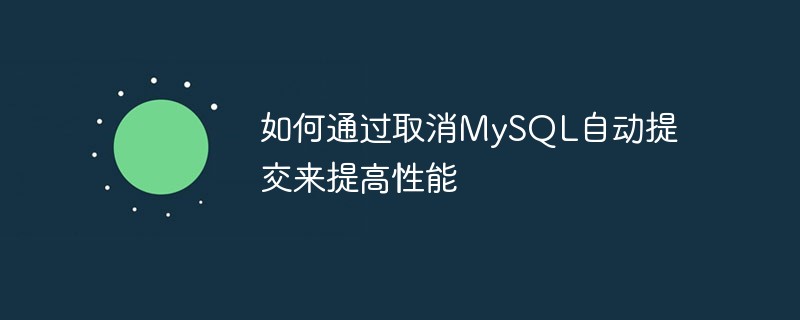 Web Front-end
Web Front-end Vue.js
Vue.js How to implement infinite scrolling to optimize application performance through Vue's virtual list
How to implement infinite scrolling to optimize application performance through Vue's virtual listHow to optimize application performance through infinite scrolling through Vue's virtual list
As the complexity of front-end applications continues to increase, especially when processing large amounts of data, some performance issues also arise. In this regard, Vue provides a powerful tool - Virtual List, which can greatly improve application performance when processing large amounts of data by dynamically rendering visible elements in the list.
This article will introduce how to use Vue's virtual list to achieve infinite scrolling and optimize application performance. We'll use a virtual address book app as an example to demonstrate how to load a large amount of data and dynamically render visible contacts on scroll.
First, we need to create a new Vue project using Vue CLI and add the vue-virtual-scroll-list plugin.
vue create virtual-list-demo cd virtual-list-demo yarn add vue-virtual-scroll-list
Then, in the App.vue file, we can start building the virtual address book application.
<template>
<div class="app">
<div class="header">虚拟通讯录</div>
<div class="contact-list" ref="listRef">
<ul>
<li v-for="contact in visibleData" :key="contact.id" class="contact-item">{{ contact.name }}</li>
</ul>
</div>
</div>
</template>
<script>
import VirtualList from 'vue-virtual-scroll-list';
export default {
name: 'App',
components: {
VirtualList,
},
data() {
return {
contactList: [], // 存放所有联系人数据
visibleData: [], // 存放可见的联系人数据
startIndex: 0, // 起始索引
endIndex: 0, // 结束索引
listHeight: 500, // 虚拟列表的高度
itemHeight: 50, // 每一项的高度
};
},
created() {
// 模拟加载联系人数据
const contacts = [];
for (let i = 0; i < 100000; i++) {
contacts.push({
id: i,
name: `联系人${i}`,
});
}
this.contactList = contacts;
this.updateVisibleData();
},
methods: {
// 根据滚动位置计算可见数据并更新
updateVisibleData() {
const start = Math.max(0, Math.floor(this.startIndex / this.itemHeight));
const end = Math.min(
this.contactList.length - 1,
Math.floor((this.startIndex + this.listHeight) / this.itemHeight)
);
this.visibleData = this.contactList.slice(start, end + 1);
},
// 监听滚动事件
handleScroll(event) {
const scrollTop = event.target.scrollTop;
this.startIndex = Math.max(0, Math.floor(scrollTop));
this.endIndex = Math.min(
this.contactList.length - 1,
Math.floor(scrollTop + this.listHeight)
);
this.updateVisibleData();
},
},
};
</script>
<style scoped>
.app {
font-family: Arial, sans-serif;
}
.header {
background-color: #f5f5f5;
padding: 10px;
text-align: center;
font-size: 18px;
}
.contact-list {
height: 500px;
overflow-y: auto;
}
.contact-item {
height: 50px;
line-height: 50px;
padding-left: 20px;
border-bottom: 1px solid #f5f5f5;
}
</style>In the above code, we use the vue-virtual-scroll-list component to wrap the contact list to achieve the virtual scrolling effect. In the created life cycle hook, we generated 100,000 simulated contact data and initialized the relevant parameters of the virtual list, such as the height of the list, the height of each item, etc. In the handleScroll method, we calculate the scroll position and update the visible contact data. Then, render the visible contacts through the v-for directive in the template.
In this way, even if there is a large amount of data that needs to be rendered, only the visible part will be rendered, which greatly reduces the number of DOM nodes and thus improves the performance of the application.
Finally, we run the application and test performance by scrolling. You'll find that the app stays smooth even when there's a lot of data to load.
To summarize, through Vue’s virtual list plug-in, we can achieve infinite scrolling and optimize application performance. Whether you are dealing with lists of large amounts of data or other scenarios that require dynamic rendering, virtual lists are a very useful tool.
The above is an introduction to how to optimize application performance through infinite scrolling through Vue's virtual list. Hope this article can be helpful to you!
The above is the detailed content of How to implement infinite scrolling to optimize application performance through Vue's virtual list. For more information, please follow other related articles on the PHP Chinese website!
 如何通过取消MySQL自动提交来提高性能May 11, 2023 am 08:15 AM
如何通过取消MySQL自动提交来提高性能May 11, 2023 am 08:15 AMMySQL是一种流行的关系型数据库管理系统,旨在提供高效、可靠、灵活的数据存储和处理方案。然而,MySQL在自动提交事务方面存在一些缺点,这可能会降低其性能。在这篇文章中,我们将介绍如何通过取消MySQL自动提交来提高其性能。一、什么是MySQL自动提交?MySQL自动提交是指对于任何一条SQL语句,默认情况下都会自动开启一个事务,并在执行完该语句后立即提交
 深入了解content-visibility属性,聊聊怎么用它优化渲染性能Jul 18, 2022 am 11:19 AM
深入了解content-visibility属性,聊聊怎么用它优化渲染性能Jul 18, 2022 am 11:19 AM本篇文章带大家了解一下CSS content-visibility属性,聊聊使用该属性怎么优化渲染性能,希望对大家有所帮助!
 如何通过MySQL对DISTINCT优化来提高性能May 11, 2023 am 08:12 AM
如何通过MySQL对DISTINCT优化来提高性能May 11, 2023 am 08:12 AMMySQL是目前应用广泛的关系型数据库之一。在大数据量存储与查询中,优化数据库性能是至关重要的。其中,DISTINCT是常用的去重查询操作符。本文将介绍如何通过MySQL对DISTINCT优化来提高数据库查询性能。一、DISTINCT的原理及缺点DISTINCT关键字用于从查询结果中去除重复行。在大量数据的情况下,查询中可能存在多个重复值,导致输出数据冗余,
 PHP高性能:如何优化数据库查询Jun 04, 2023 am 08:40 AM
PHP高性能:如何优化数据库查询Jun 04, 2023 am 08:40 AM在当前互联网时代,随着数据的爆炸式增长,数据库成为了一个服务的核心。数据库的性能和速度更是直接影响了网站及其应用的用户体验和可用性,因此如何优化数据库查询是开发人员需要着重研究的一个问题。而在PHP语言中,通过对数据库查询语句的优化,可以提高程序的性能,减少服务器的负担,提高服务的稳定性。本文将从以下几个方面,介绍如何优化数据库查询:一、使用索引在进行查询时
 如何使用MySQL的慢查询日志来优化性能May 11, 2023 am 09:00 AM
如何使用MySQL的慢查询日志来优化性能May 11, 2023 am 09:00 AM随着数据量的增加和应用的复杂性,数据库的性能成为了一个越来越重要的问题。MySQL作为一款流行的关系型数据库管理系统,在优化性能方面也提供了许多工具和方法。其中,使用慢查询日志对MySQL进行性能优化是一种非常实用的方法。本文将介绍如何使用MySQL的慢查询日志来优化性能。一、什么是慢查询日志慢查询日志是MySQL中的一种日志记录机制,它会记录执行时间超过某
 如何通过MySQL对UNION优化来提高性能May 11, 2023 pm 05:40 PM
如何通过MySQL对UNION优化来提高性能May 11, 2023 pm 05:40 PM在许多数据库应用程序中,我们都会面临需要整合来自多个数据源的数据的情况。MySQL的UNION语句就是一种用来解决这种情况的方式,它允许我们将两个或多个SELECT语句的结果集合并为一个。虽然这是一个非常方便的功能,但如果不加以优化,UNION语句也可能对系统产生性能问题。本文将探讨如何通过MySQL对UNION优化来提高性能。使用UNIONALL在使用U
 通过使用MySQL查询缓存提高性能May 11, 2023 am 08:31 AM
通过使用MySQL查询缓存提高性能May 11, 2023 am 08:31 AM随着数据量的增加和访问量的增加,数据库的性能问题已经成为很多网站的瓶颈。在许多情况下,数据库查询是网站中最耗费资源的操作之一。MySQL作为一种开源的关系型数据库管理系统,已经成为许多网站的首选数据库。在MySQL中,查询缓存是一种可以显著提高查询性能的缓存机制。本文将介绍MySQL查询缓存的工作原理,并提供一些实用建议,可以帮助您更好地使用MySQL查询缓
 如何通过优化PHP与MySQL的通信来提高性能May 11, 2023 am 10:33 AM
如何通过优化PHP与MySQL的通信来提高性能May 11, 2023 am 10:33 AM随着互联网的不断发展,越来越多的网站和应用程序采用了PHP和MySQL技术来支持其后台服务。尽管这些技术已经被证明是可靠的,但是在高并发访问的情况下,PHP和MySQL通信不免会出现一些性能问题。为了提高系统的响应速度和稳定性,优化PHP和MySQL的通信成为了必不可少的一环。以下是一些建议,希望可以通过优化PHP和MySQL的通信来提高性能。使用防缓存技术


Hot AI Tools

Undresser.AI Undress
AI-powered app for creating realistic nude photos

AI Clothes Remover
Online AI tool for removing clothes from photos.

Undress AI Tool
Undress images for free

Clothoff.io
AI clothes remover

AI Hentai Generator
Generate AI Hentai for free.

Hot Article

Hot Tools

SublimeText3 Mac version
God-level code editing software (SublimeText3)

Dreamweaver CS6
Visual web development tools

ZendStudio 13.5.1 Mac
Powerful PHP integrated development environment

Safe Exam Browser
Safe Exam Browser is a secure browser environment for taking online exams securely. This software turns any computer into a secure workstation. It controls access to any utility and prevents students from using unauthorized resources.

PhpStorm Mac version
The latest (2018.2.1) professional PHP integrated development tool





